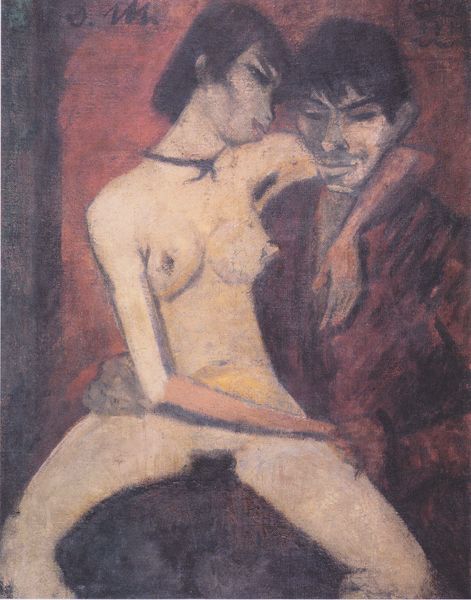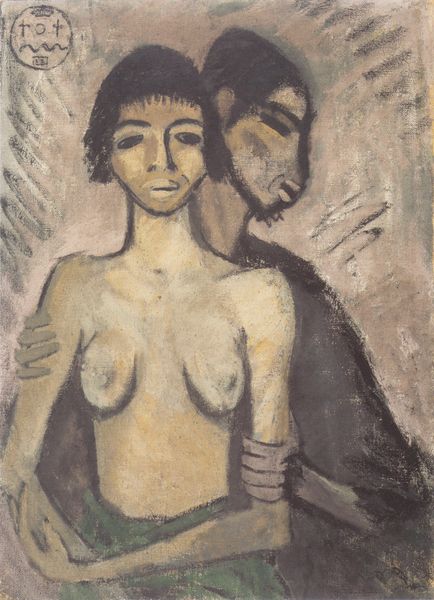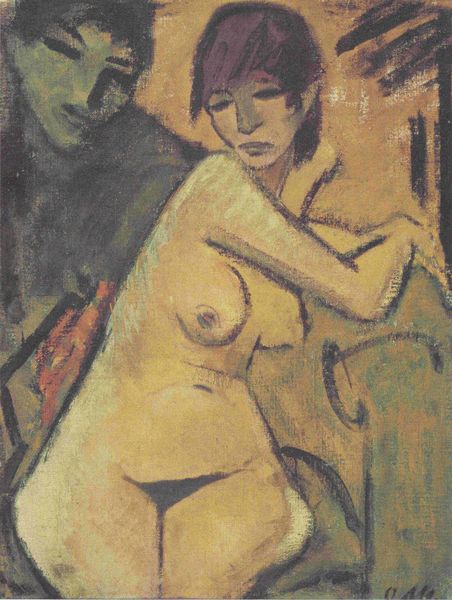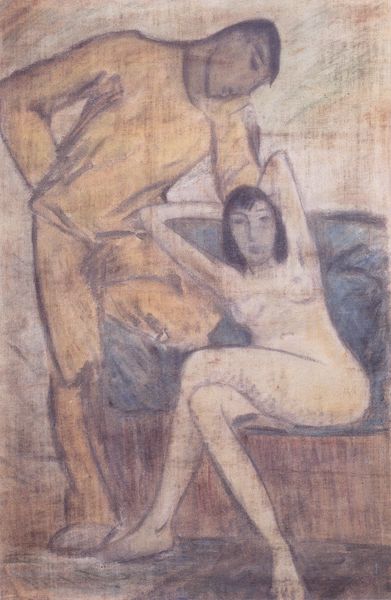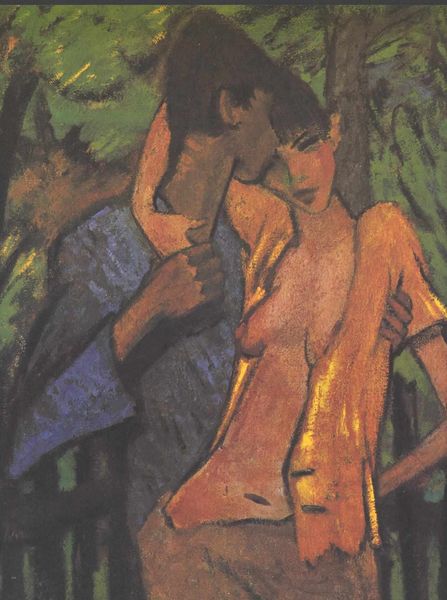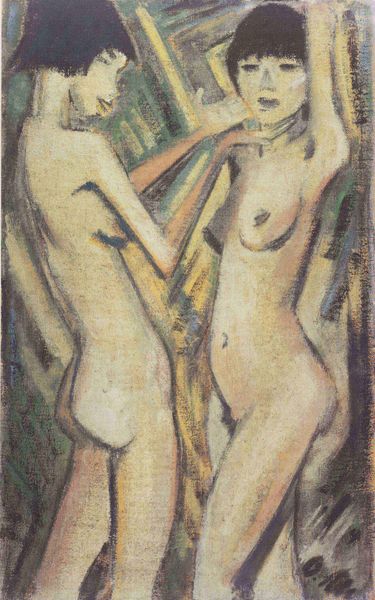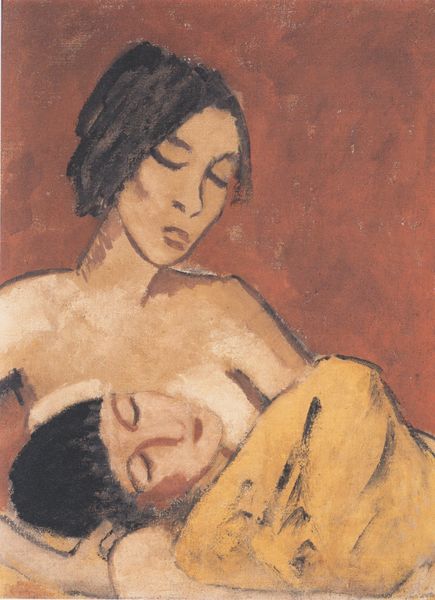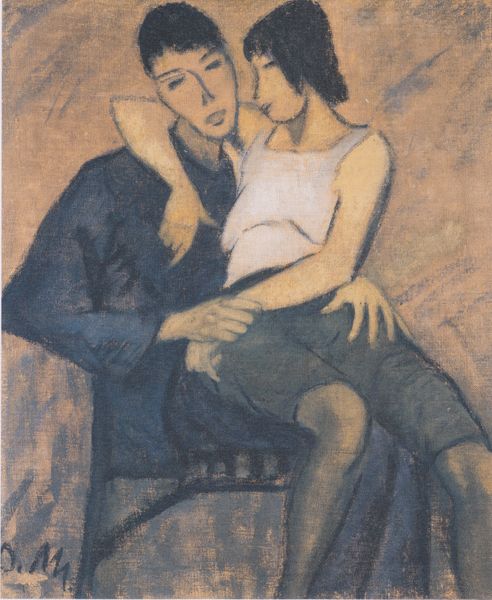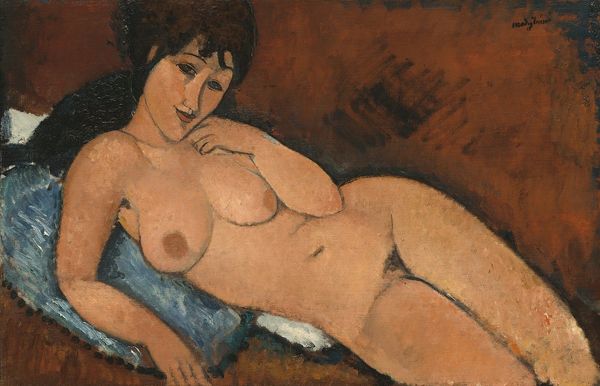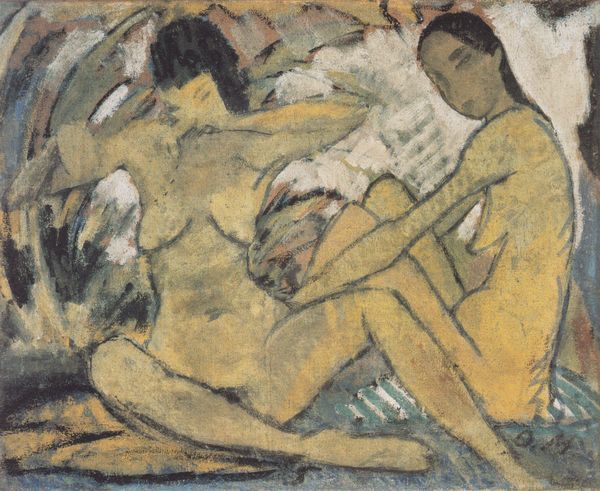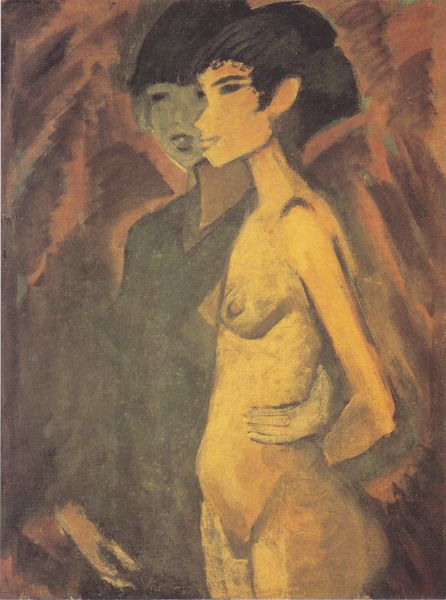
painting, oil-paint
#
portrait
#
painting
#
oil-paint
#
figuration
#
oil painting
#
expressionism
#
genre-painting
#
nude
Dimensions: 85.5 x 110 cm
Copyright: Public domain
Curator: This is Otto Mueller's 1922 painting "Paar in der Kaschemme," currently residing at the Lehmbruck Museum in Duisburg. Crafted with oil paints, it presents a striking image of a couple. Editor: My initial impression is one of quiet desperation. The woman’s pose is sensual, yet her face, especially her eyes, exudes a sense of weariness. Curator: It’s essential to view Mueller within the context of German Expressionism, but also to note his break from some of its core tenets. While his contemporaries were capturing the alienation of modern urban life, Mueller often turned to more intimate subjects, albeit depicted through the characteristic Expressionist lens of heightened emotion. Editor: Yes, the Expressionist distortion is definitely at play. Her limbs seem elongated, almost fragile, and his shadowed face looming behind her… There’s a clear power dynamic being visualized, perhaps unintentionally. Are they lovers or simply occupying the same space? The “Kaschemme” of the title suggests a bar, a lower class establishment; their proximity is more about economics. Curator: It does invite speculation. The fact that she is nude, presented as a central figure, and he is clothed positions her vulnerability and his… protection? One might wonder, however, if Mueller critiques not merely an exchange, but how this transaction impacts individual identities. It raises questions about exploitation in spaces of social vulnerability. Editor: Exactly! Think about the male gaze, class disparity, gender… Are we simply meant to admire the form, or does the image encourage us to consider her plight, the systemic inequalities that might lead to her presence in that bar, her resignation. Is she there willingly? Curator: This is an open conversation indeed. Mueller walked a tightrope. He showed a kind of empathy without overtly making her into an object of pity. What kind of gaze is he asking us to use to engage with her, is the underlying questions? Editor: Perhaps what makes this painting enduring is this ambiguity; it does not propose simple truths but urges a discomfort that resonates even a century later. We must consider the power structures both embedded in the paint itself, and those it evokes. Curator: Well said. Considering it now, within the gallery context, it compels us to look at art's power not to dictate meaning, but to agitate, to make us confront what we may rather ignore. Editor: I completely agree. And the dialogue continues…
Comments
No comments
Be the first to comment and join the conversation on the ultimate creative platform.
